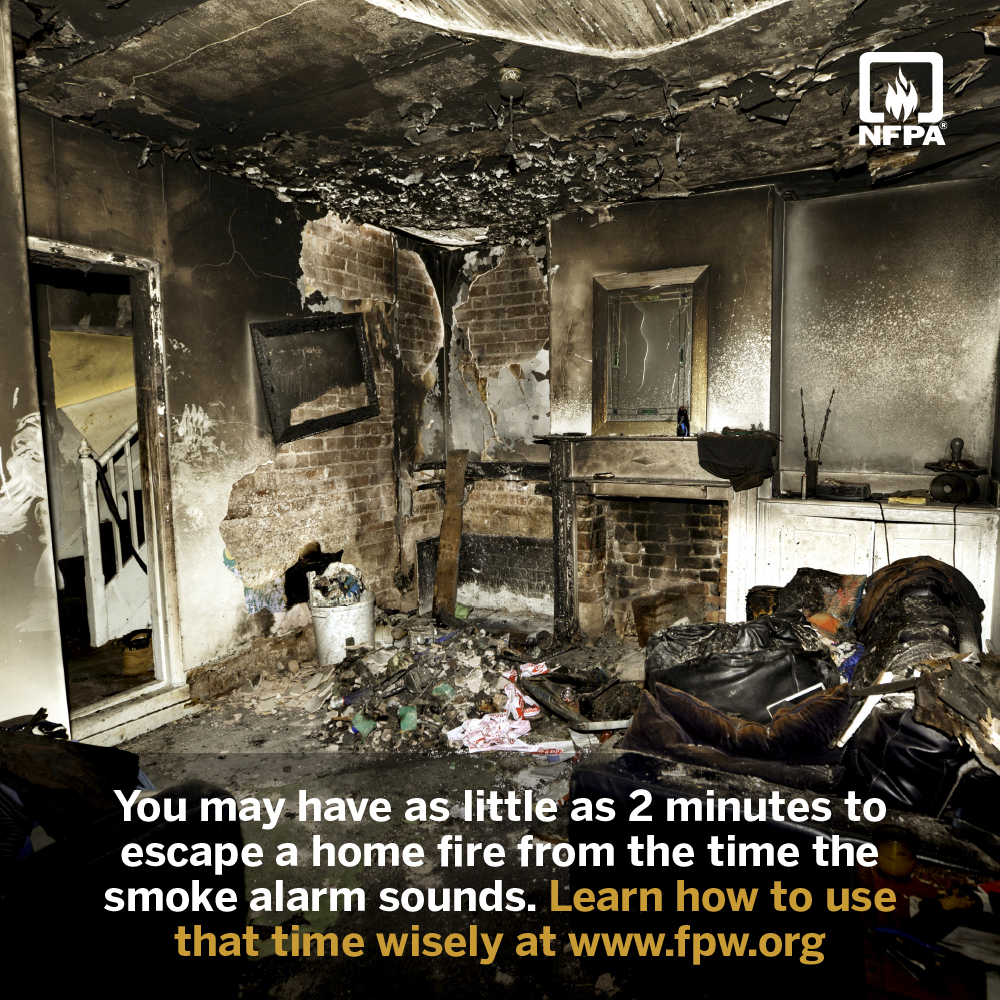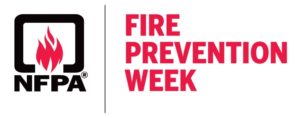October 6 – 12 is National Fire Prevention Week
Home Fire Escape Planning and Practice
Home fire escape planning and drills are an essential part of fire safety. A home fire escape plan needs to be developed and practiced before a fire strikes.
Home fire escape planning should include the following:
- Drawing a map of each level of the home, showing all doors and windows
- Going to each room and pointing to the two ways out
- Making sure someone will help children, older adults, and people with disabilities wake up and get out
- Teaching children how to escape on their own in case you cannot help them
- Establishing a meeting place outside and away from the home where everyone can meet after exiting
- Having properly installed and maintained smoke alarms
Home fire escape practice should include the following:
- Pushing the smoke alarm button to start the drill
- Practicing what to do in case there is smoke: Get low and go. Get out fast.
- Practicing using different ways out and closing doors behind you as you leave
- Never going back for people, pets, or things
- Going to your outdoor meeting place
- Calling 9-1-1 or the local emergency number from a cell phone or a neighbor’s phone
Check out the typical timeline of a house fire here
Smoke Alarms
- Smoke alarms can mean the difference between life and death in a fire.
- Working smoke alarms cut the risk of dying in a home fire in half.
- Install smoke alarms in every sleeping room, outside each separate sleeping area, and on every level of the home, including the basement.
- Test smoke alarms at least once a month using the test button.
- Make sure everyone in the home understands the sound of the smoke alarm and knows how to respond.
Cooking
- Cooking is the leading cause of home fires and home fire injuries. Thanksgiving is the leading day for fires involving cooking equipment.
- The leading cause of fires in the kitchen is unattended cooking.
- Stay in the kitchen when you are frying, boiling, grilling, or broiling food.
- If you are simmering, baking, or roasting food, check it regularly and stay in the home.
- Keep anything that can catch fire away from your stovetop.
Heating
- Heating equipment is one of the leading causes of home fires during the winter months.
- Space heaters are the type of equipment most often involved in home heating equipment fires.
- All heaters need space. Keep anything that can burn at least 3 feet (1 meter) away from heating equipment.
- Have a 3-foot (1-meter) “kid-free zone” around open fires and space heaters.
- Purchase and use only portable space heaters listed by a qualified testing laboratory.
- Have a qualified professional install heating equipment.
- Maintain heating equipment and chimneys by having them cleaned and inspected by a qualified professional at least once a year.
If a wildfire is threatening your home:
- Create a plan for evacuation that includes alternate routes out of the danger area.
- Have prepacked kits with essentials such as medicine, family records, credit cards, a change of clothing, and food and water.
- Create a family communication plan that designates an out-of-area friend or relative as a point of contact to act as a single source of communication.
- Prepare a plan for the care of pets and other animals.
- Sign up for wildfire alerts.
- Take steps to protect family, friends, or neighbors who have disabilities.
- Stay aware of local fire conditions. When told to evacuate, go promptly. If you feel unsafe, do not wait for an evacuation order—leave immediately.
Additional Fire Prevention Info and Safety Tips


